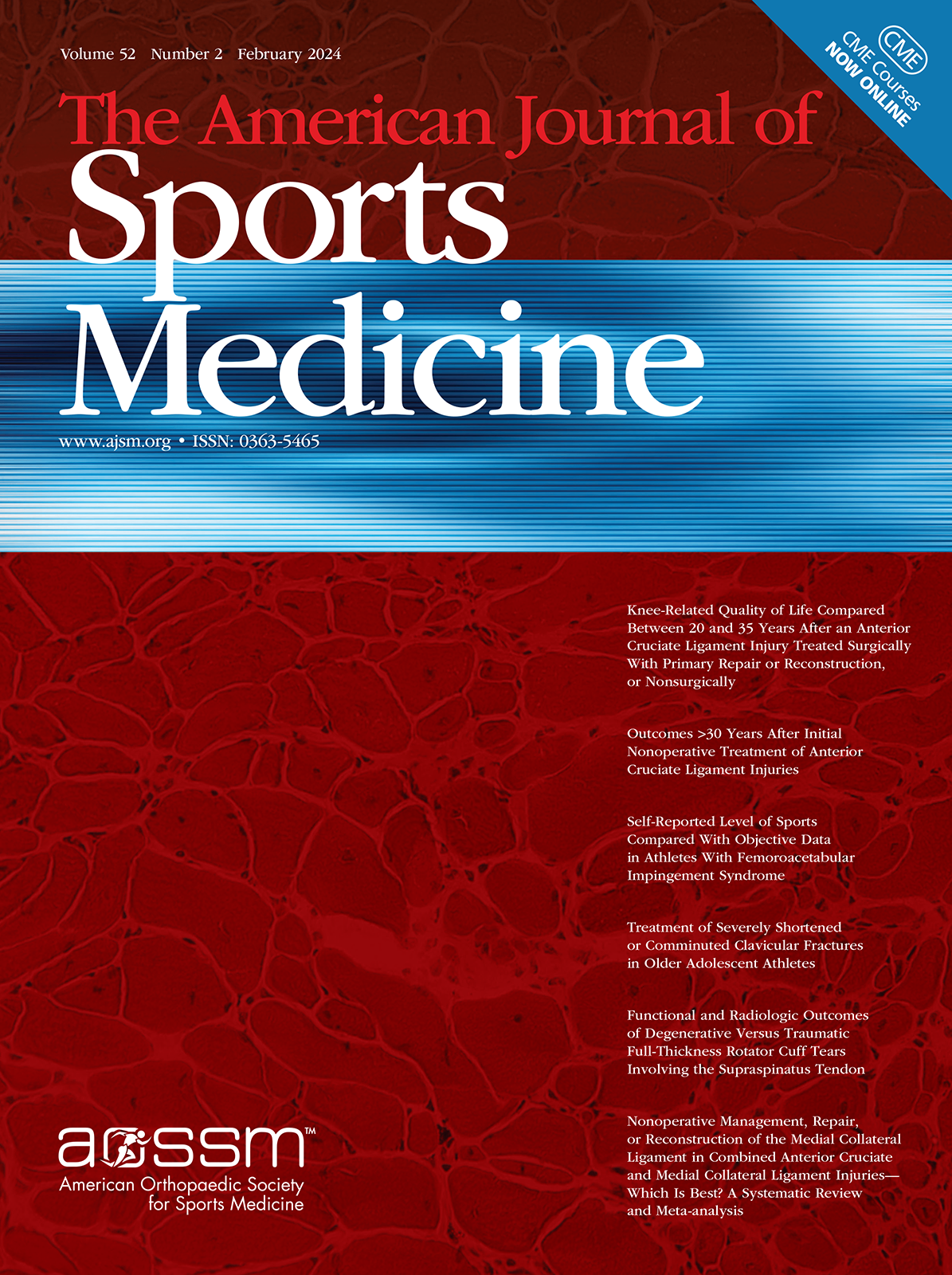
The mid-term clinical outcome of two graft-tensioning protocols in ACL reconstruction

The mid-term clinical outcome of two graft-tensioning protocols in ACL reconstruction
Effect of Matching or Overconstraining Knee Laxity During Anterior Cruciate Ligament Reconstruction on Knee Osteoarthritis and Clinical Outcomes: A Randomized Controlled Trial With 84-Month Follow-up
Am J Sports Med. 2016 Jul;44(7):1660-70Did you know you're eligible to earn 0.5 CME credits for reading this report? Click Here
Synopsis
90 patients scheduled to undergo arthroscopic anterior cruciate ligament (ACL) reconstruction were randomized to either a high tension or low tension protocol for intraoperative graft tensioning. The purpose of this study was to evaluate if the high-tension cohort demonstrated improved clinical outcome measures and a lower incidence of osteoarthritis at 7-year follow-up. The results of this trial ...
To view the full content, login to your account,
or start your 30-day FREE Trial today.
FREE TRIAL
LOGIN
Forgot Password?
Explore some of our unlocked ACE Reports below!

Learn about our AI Driven
High Impact Search Feature
Our AI driven High Impact metric calculates the impact an article will have by considering both the publishing journal and the content of the article itself. Built using the latest advances in natural language processing, OE High Impact predicts an article’s future number of citations better than impact factor alone.
Continue



 LOGIN
LOGIN

Join the Conversation
Please Login or Join to leave comments.